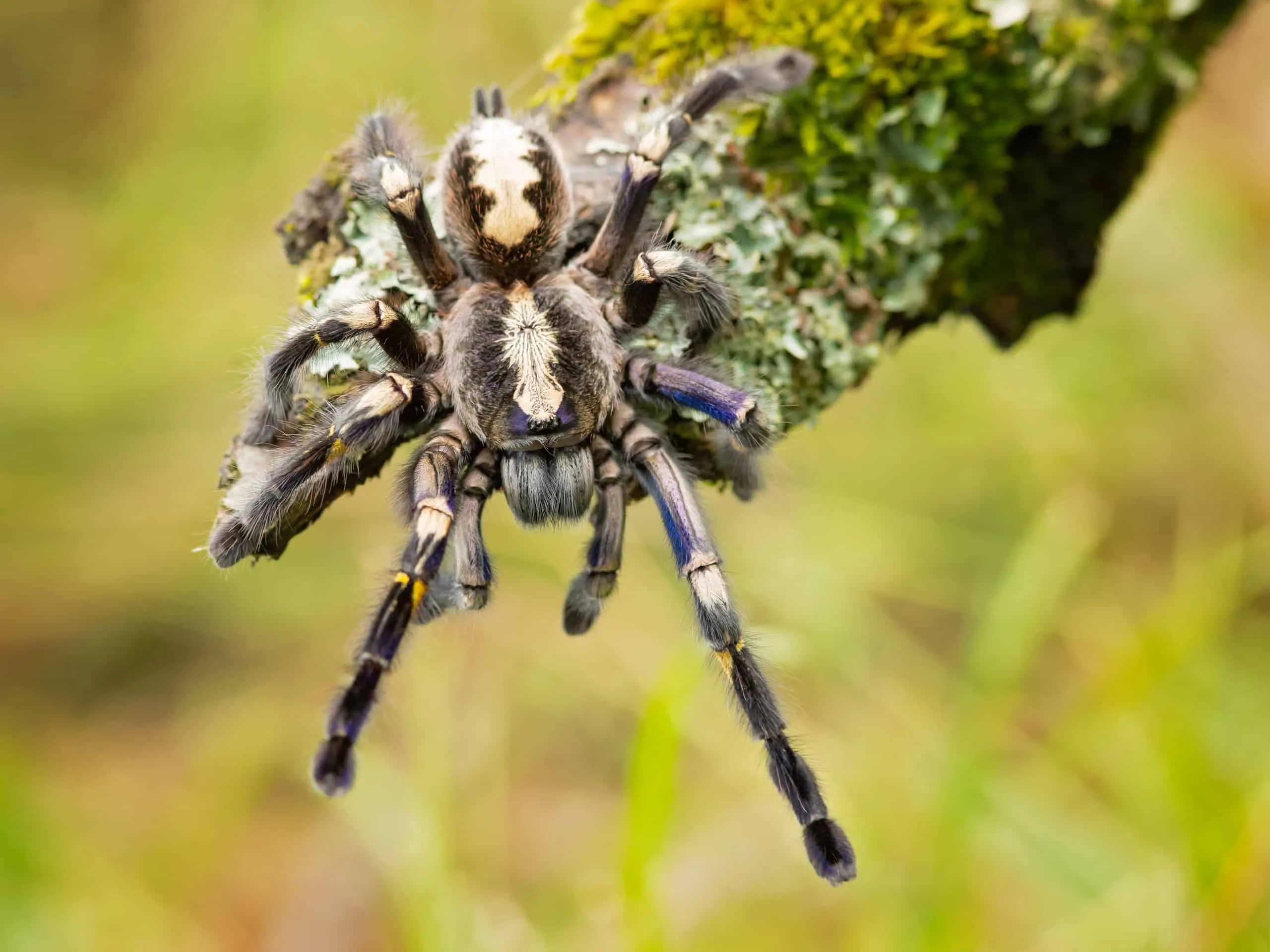What is a Gooty Tarantula?
The Gooty Tarantula, scientifically known as Poecilotheria metallica, is a striking and highly sought-after species of tarantula native to a small area of Andhra Pradesh, India. These spiders are renowned for their vibrant coloration and intricate patterns, making them a favorite among arachnid enthusiasts. Despite their beauty, Gooty Tarantulas possess potent venom and are best appreciated from a distance. These fascinating creatures play a crucial role in their ecosystem, helping to control insect populations.
Appearance and Identification
Identifying a Gooty Tarantula is relatively straightforward due to its distinct appearance. They are medium to large-sized spiders, with leg spans that can reach up to 8 inches. The most striking feature is their metallic blue and gray coloration, complemented by intricate patterns on their legs and carapace. The abdomen typically displays a contrasting pattern of yellow or orange markings. Their impressive size and unique coloration make them easily distinguishable from other tarantula species.
Key Features of Gooty Tarantulas
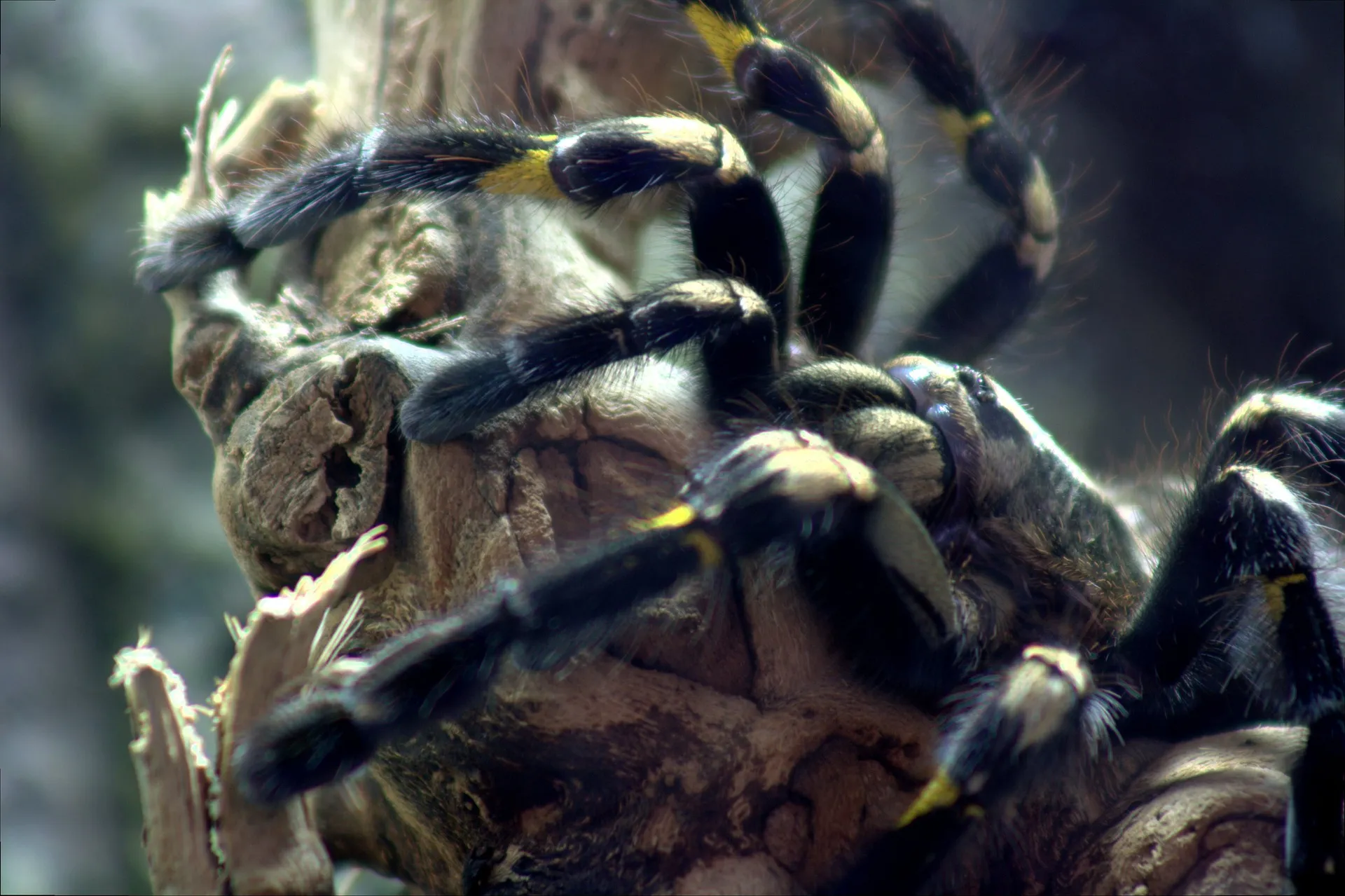
Gooty Tarantulas are a beautiful species to observe and understand. Their characteristics set them apart in the world of tarantulas. They are known for their arboreal nature and the creation of webs in the trees.
Size and Coloration
As mentioned before, the Gooty Tarantula can have a leg span of up to 8 inches, making them a fairly large species. The color is a vibrant metallic blue and gray with distinct patterns. The contrast in color is really what makes them stand out from other species.
Habitat and Distribution
The Gooty Tarantula’s habitat is very specific and localized, adding to its rarity and conservation concerns. Understanding their environment is critical to appreciating and protecting them.
Native Region
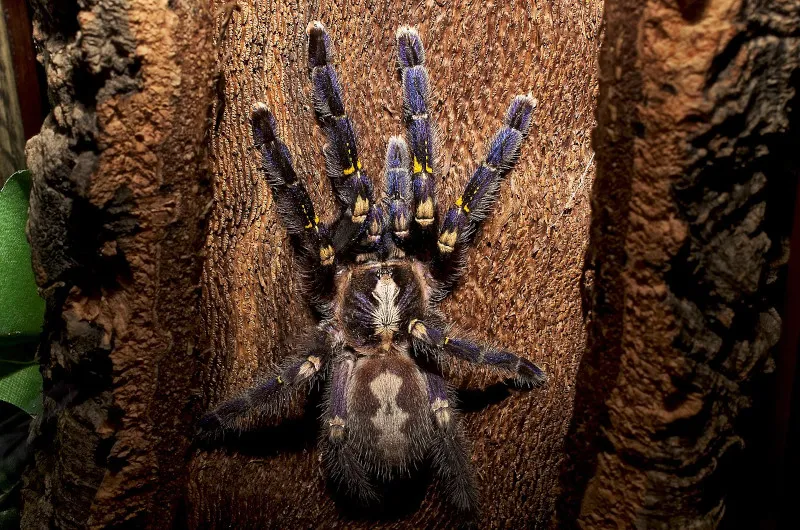
Gooty Tarantulas are exclusively found in a small region of Andhra Pradesh, India. They inhabit a very specific ecological niche within this area, making them particularly vulnerable to habitat loss and other environmental changes. Due to their isolated habitat, their populations are especially susceptible to threats.
Preferred Environment
These tarantulas are arboreal, meaning they live primarily in trees. They prefer to reside in hollows or crevices within the trees, where they build webs to catch prey. They thrive in warmer climates and humid environments, so their habitat must provide these essential conditions to survive.
Unique Behaviors
Gooty Tarantulas have fascinating behaviors that make them unique compared to other species. They possess interesting defensive mechanisms and very specific hunting strategies.
Defensive Mechanisms
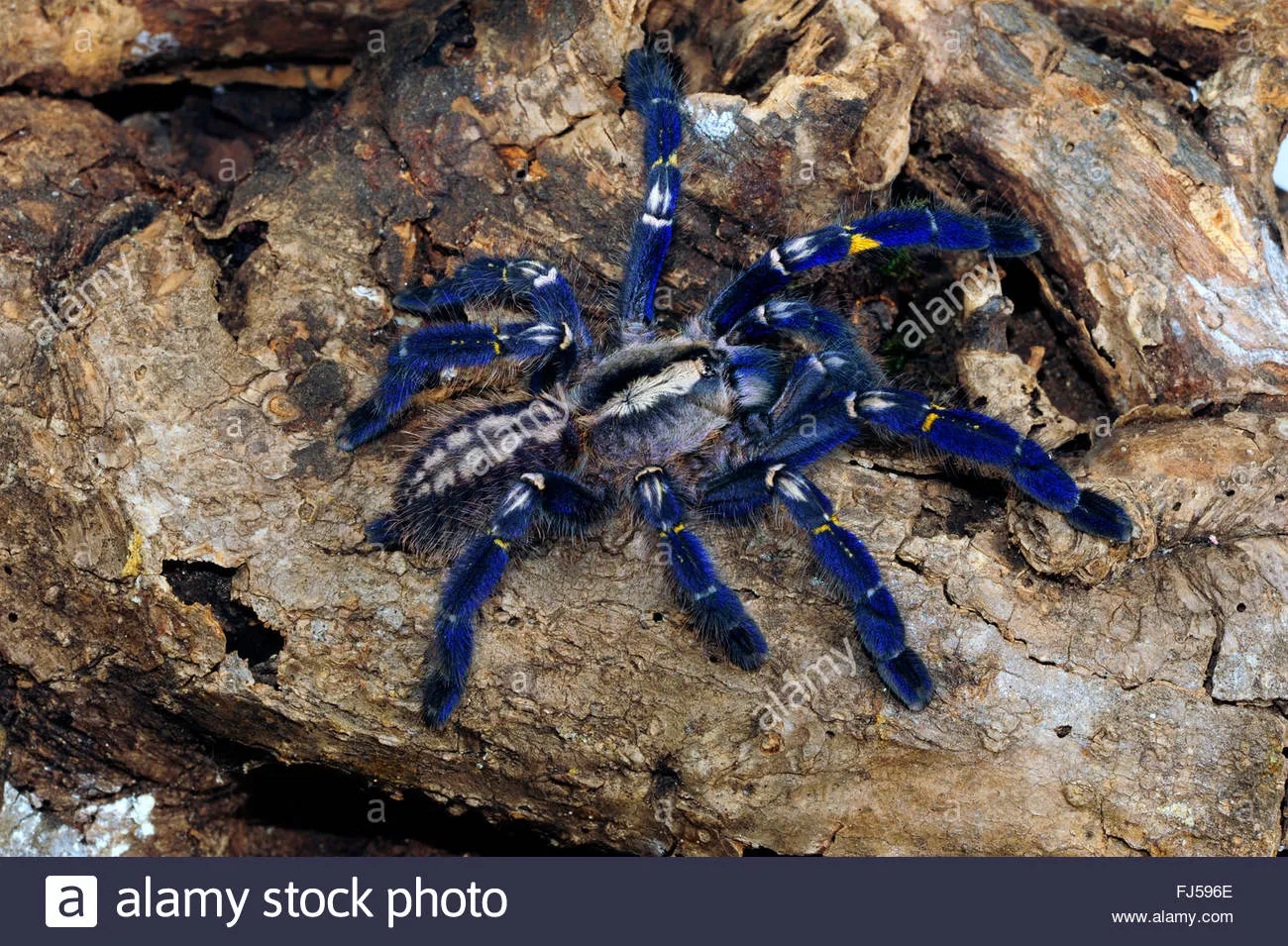
When threatened, Gooty Tarantulas exhibit a range of defensive behaviors. These can include raising their front legs and displaying their fangs in a threat posture. They also possess urticating hairs on their abdomen, which can be flicked towards perceived threats. Additionally, they can deliver a bite that injects venom, which is not usually lethal to humans but can cause significant pain.
Hunting Strategies
As ambush predators, Gooty Tarantulas use their webs to capture prey. They typically sit and wait for insects and other small creatures to blunder into their webs. Once prey is caught, they quickly move in to subdue it with their venomous fangs. They are also capable of chasing down prey if necessary.
Diet and Feeding Habits
Understanding the dietary needs of the Gooty Tarantula is crucial to their survival. Their feeding habits give us insights into their role within their natural environment.
Common Prey
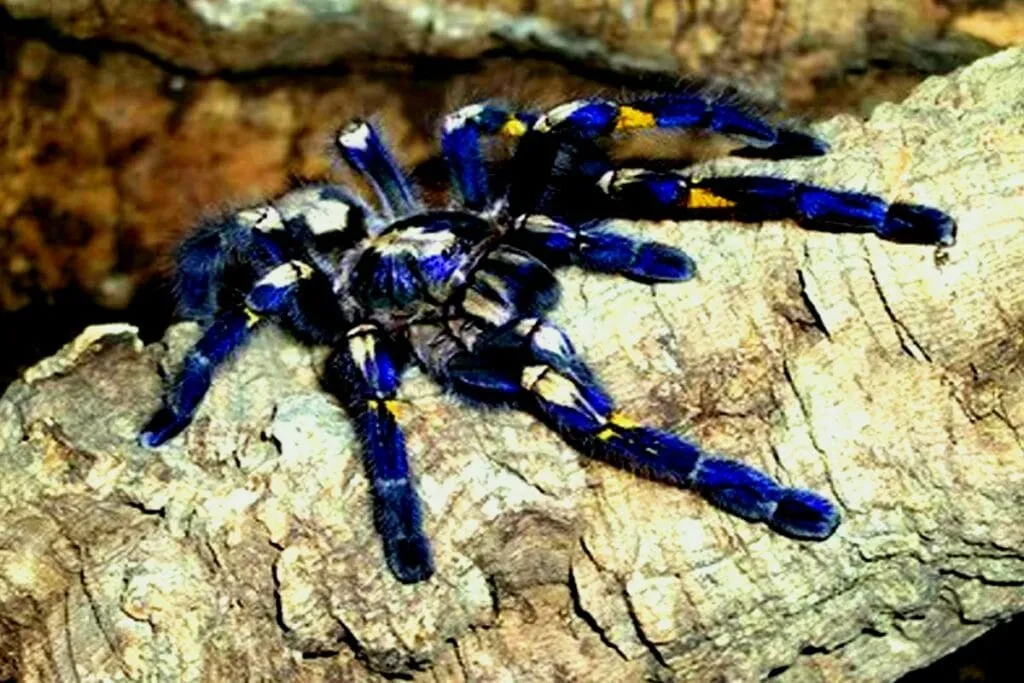
The Gooty Tarantula’s diet primarily consists of insects and other invertebrates. They will consume various types of insects, including crickets, grasshoppers, moths, and beetles. They are also known to occasionally feed on small lizards and other small vertebrates. The availability of prey is a key factor in determining their population size and distribution.
Feeding Frequency
Adult Gooty Tarantulas typically feed every few days to a week, depending on their size and the availability of food. Juvenile tarantulas may need to eat more frequently to support their growth. In captivity, they are often fed a steady supply of insects to ensure they receive adequate nutrition. They can survive for extended periods without eating, but it can impact their health.
Conservation Status and Threats
The Gooty Tarantula faces several threats, which have led to its listing as a vulnerable species. Conservation efforts are underway to protect this beautiful spider, but more action is needed to ensure its survival.
Threats to Survival
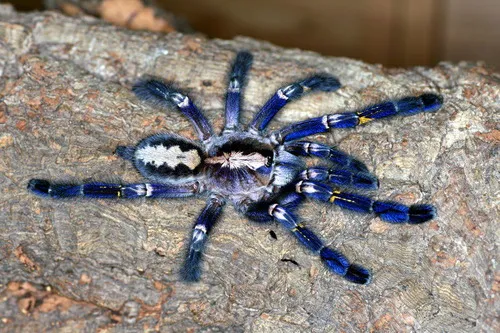
The primary threats to the Gooty Tarantula include habitat loss due to deforestation and agricultural expansion. The species is also vulnerable to the pet trade, as they are highly sought after by collectors. Climate change poses an additional threat, as changing environmental conditions may impact their habitat and prey availability.
Conservation Efforts
Several conservation efforts are in place to protect the Gooty Tarantula. These include habitat preservation and reforestation initiatives. Efforts to regulate the pet trade and protect the spider from overcollection are also crucial. Public awareness campaigns can help educate people about the importance of conserving this unique species. Captive breeding programs may also play a role in bolstering populations.
Conclusion
The Gooty Tarantula is a remarkable species with a unique beauty and fascinating behaviors. While they face significant threats, ongoing conservation efforts offer hope for their survival. By understanding and appreciating these amazing spiders, we can take steps to protect them and ensure that future generations can marvel at their beauty in their natural habitat.
